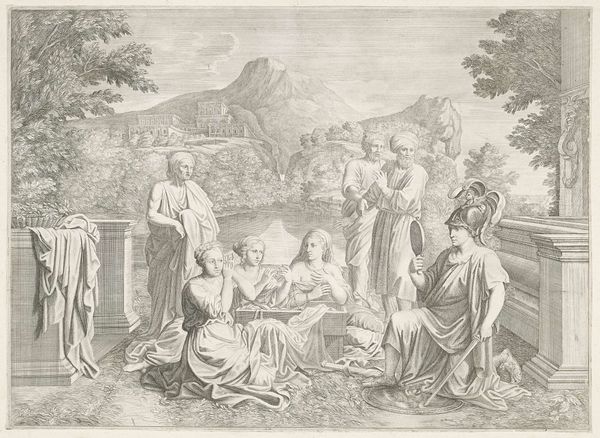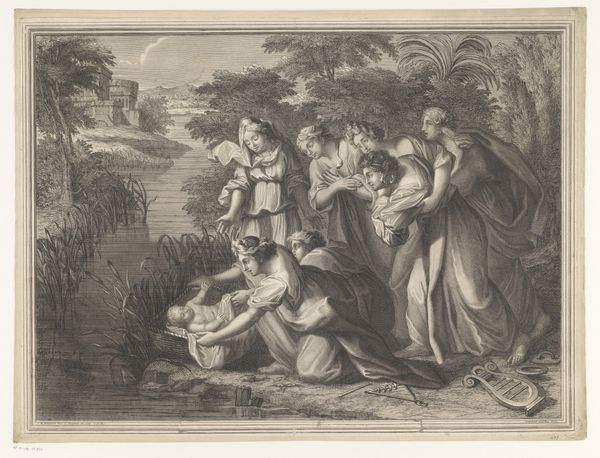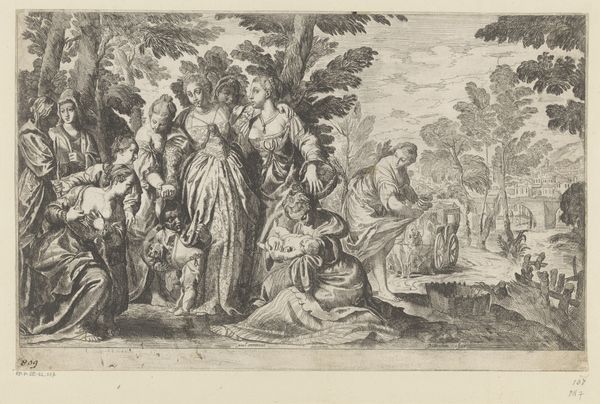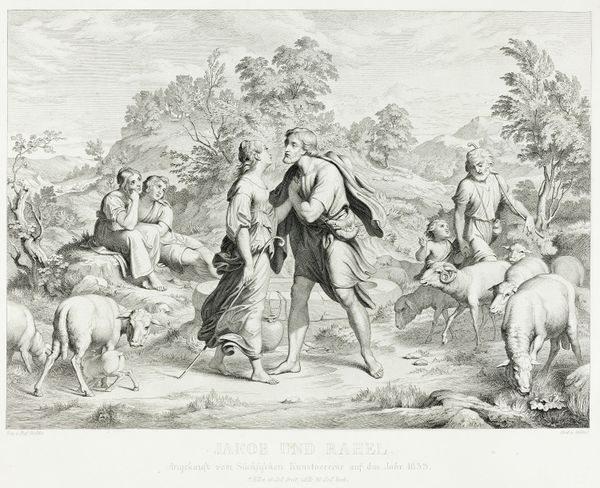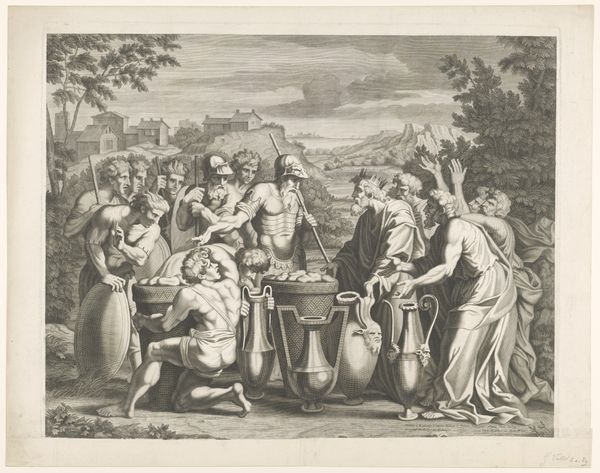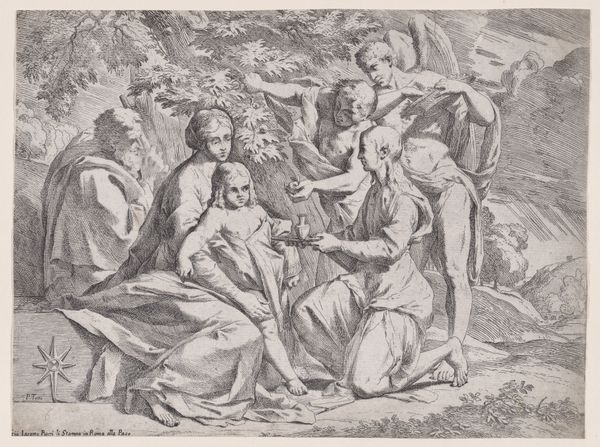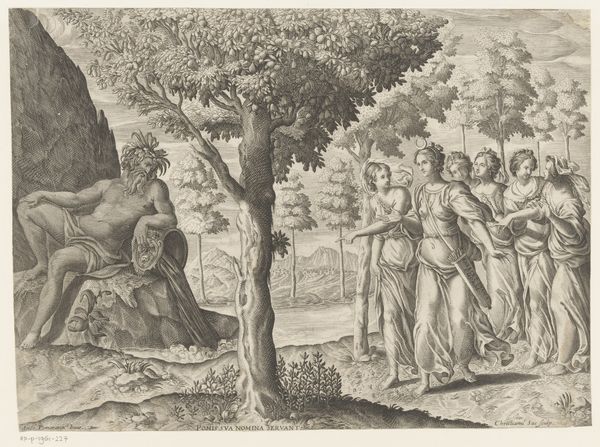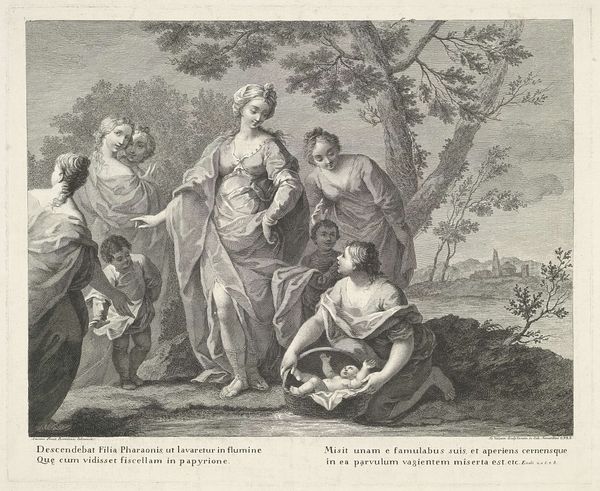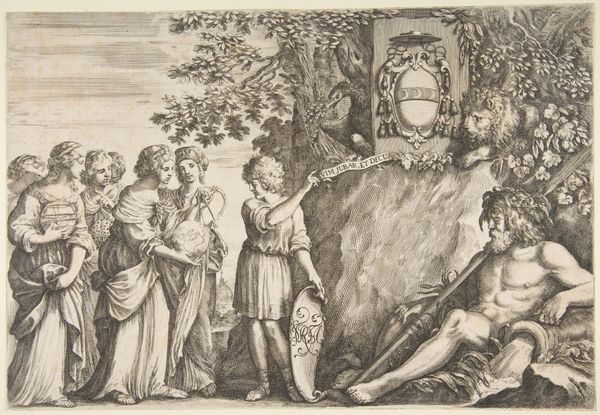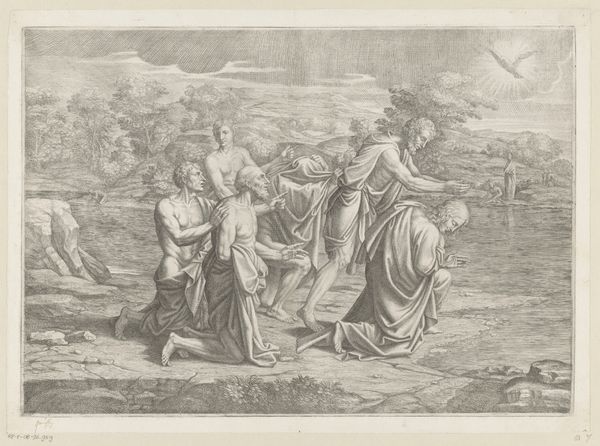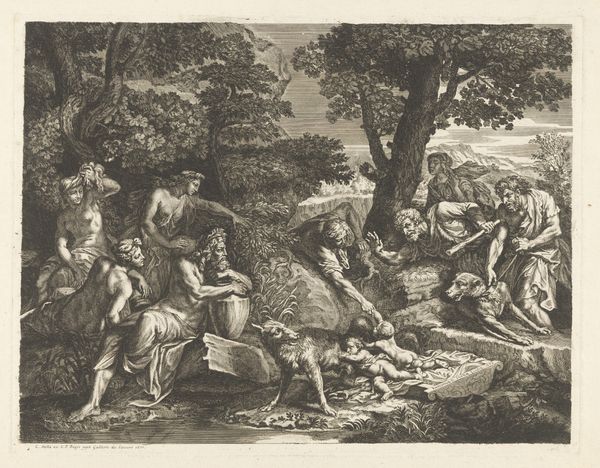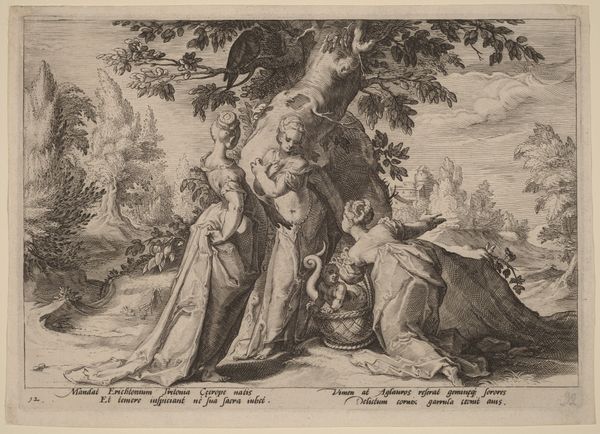
Mozes wordt gevonden door de dochter van de farao 1680 - 1690
0:00
0:00
augustinusiterwesten
Rijksmuseum
print, engraving
#
baroque
# print
#
landscape
#
figuration
#
history-painting
#
engraving
Dimensions: height 269 mm, width 408 mm
Copyright: Rijks Museum: Open Domain
Curator: Let's examine "Mozes wordt gevonden door de dochter van de farao," an engraving made sometime between 1680 and 1690 by Augustinus Terwesten the Elder, currently held in the Rijksmuseum's collection. What are your immediate impressions? Editor: It’s captivating. The way light and shadow are rendered through etching feels incredibly dynamic. There's almost a stage-like quality, drawing me right into the moment of discovery. Curator: Absolutely. Terwesten's expertise in engraving transforms a biblicial narrative into something so immediately human. Consider the lines here – meticulously carved, defining form and texture. What socio-economic factors facilitated such detailed printmaking in the Dutch Golden Age? The paper, the inks, the skilled labor - all essential ingredients in the piece's creation and circulation. Editor: And within that social landscape, we see a story of forced migration and resilience—the very factors still at play in global politics today. Look at the Pharoah's daughter, centered. It's a scene of compassion in stark contrast to the systematic infanticide sanctioned by her father. Power, gender, resistance all subtly coded. Curator: Precisely. Consider also the act of replication inherent in printmaking. Each impression circulated this imagery, imbuing the subject with greater cultural capital. There’s a democratizing aspect to print; multiple impressions meant wider dissemination. Were these prints used didactically? Who was consuming these images and what was the imprint on broader society? Editor: Certainly. Think about how it subtly subverts patriarchal narratives. Here, female figures defy authoritarian rule, engaging in acts of nurturing and salvation. The scene prompts us to examine the female spaces of resistance carved out amid oppressive systems. It questions constructions of authority based on both gender and political rule. Curator: And back to materials. Knowing these were printed on paper – likely linen-rag stock which held ink well, offering contrast – changes our reading. Its archival nature provides a trace from creation to reception. It speaks to cycles of artistic process and production and ultimately asks who the subject was designed for and why. Editor: Precisely. This engraving encourages discussions around social justice, prompting vital consideration about how artworks from the past reflect and resonate with present-day concerns regarding equity, power, and social change. Curator: Thank you. Looking at Terwesten's print, we’re reminded how material practices, coupled with social, political themes of human rights, are perpetually intertwined within the sphere of art history. Editor: It becomes clear how even a historical image carries vital lessons for comprehending our present condition and envisioning avenues for progress.
Comments
No comments
Be the first to comment and join the conversation on the ultimate creative platform.
